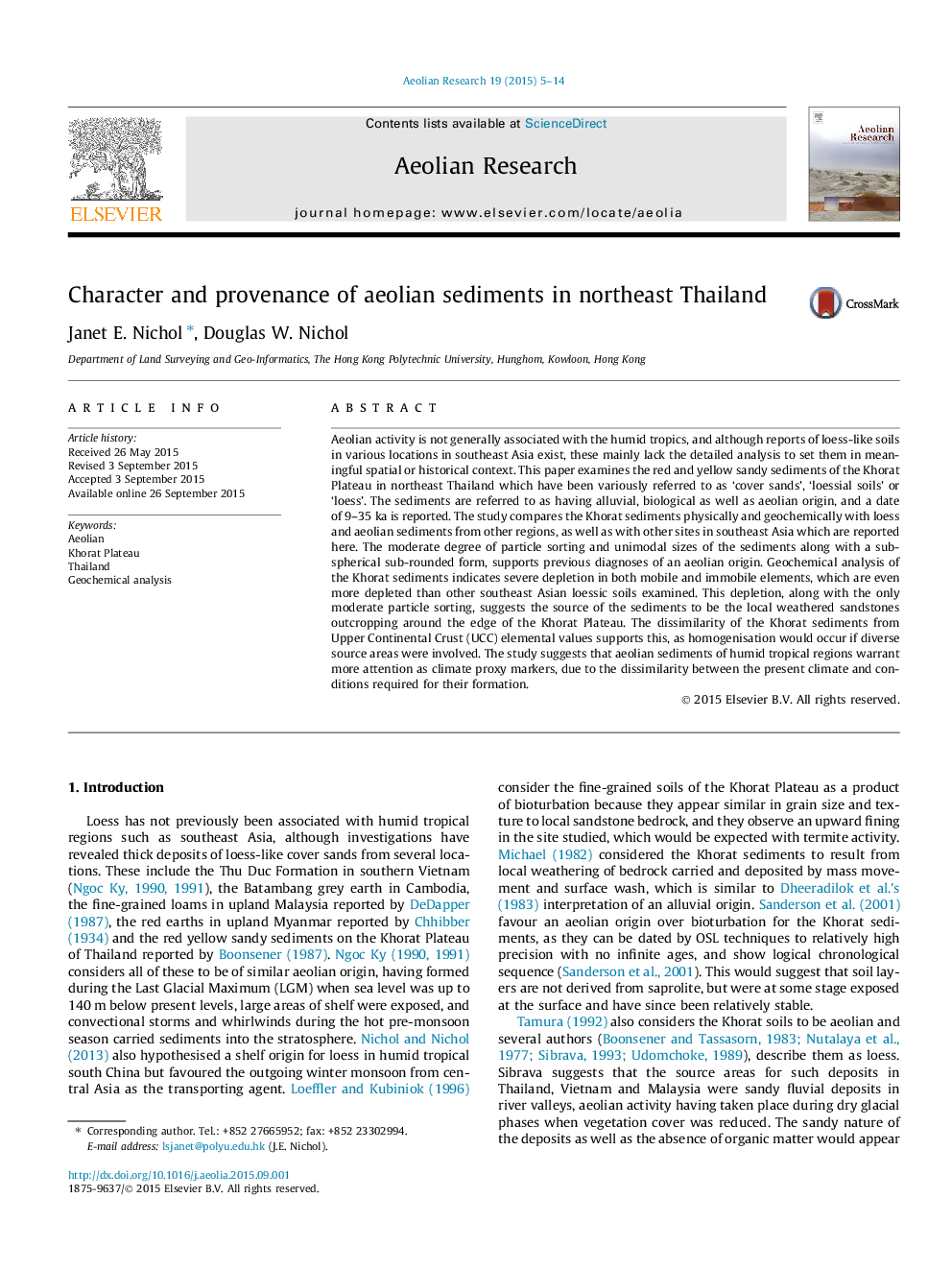| کد مقاله | کد نشریه | سال انتشار | مقاله انگلیسی | نسخه تمام متن |
|---|---|---|---|---|
| 6426301 | 1346953 | 2015 | 10 صفحه PDF | دانلود رایگان |
- Fine sandy sediments of northeast Thailand are examined to confirm origin.
- Geochemical and physical characteristics of sediments suggest aeolian origin.
- Climate during deposition must have been vastly different from today.
Aeolian activity is not generally associated with the humid tropics, and although reports of loess-like soils in various locations in southeast Asia exist, these mainly lack the detailed analysis to set them in meaningful spatial or historical context. This paper examines the red and yellow sandy sediments of the Khorat Plateau in northeast Thailand which have been variously referred to as 'cover sands', 'loessial soils' or 'loess'. The sediments are referred to as having alluvial, biological as well as aeolian origin, and a date of 9-35Â ka is reported. The study compares the Khorat sediments physically and geochemically with loess and aeolian sediments from other regions, as well as with other sites in southeast Asia which are reported here. The moderate degree of particle sorting and unimodal sizes of the sediments along with a sub-spherical sub-rounded form, supports previous diagnoses of an aeolian origin. Geochemical analysis of the Khorat sediments indicates severe depletion in both mobile and immobile elements, which are even more depleted than other southeast Asian loessic soils examined. This depletion, along with the only moderate particle sorting, suggests the source of the sediments to be the local weathered sandstones outcropping around the edge of the Khorat Plateau. The dissimilarity of the Khorat sediments from Upper Continental Crust (UCC) elemental values supports this, as homogenisation would occur if diverse source areas were involved. The study suggests that aeolian sediments of humid tropical regions warrant more attention as climate proxy markers, due to the dissimilarity between the present climate and conditions required for their formation.
Journal: Aeolian Research - Volume 19, Part A, December 2015, Pages 5-14
